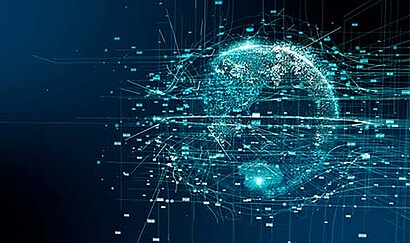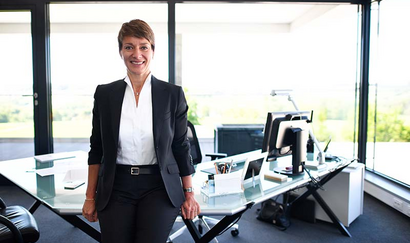Whitepaper
Videosolutions 4.0 – the NEW NORMAL
September 22, 2020
In fact, the situation is: In recent years there has indeed been a rapid development, because artificial intelligence (AI), modern interfaces and intelligent, highly available software open up many new fields of application for the efficient, future-proof and DSGVO-compliant use of video solutions Also the classic areas of application, such as averting dangers, increasing security, preventing or clearing up fraud, sabotage and manipulation or documenting the transfer of liability are constantly being enhanced. Only in this way can companies, public authorities, banks, state institutions and agencies prepare for the future, guarantee security for people, values, and processes, operate profitably and be competitive. Here are some examples:
Bundling resources and transferring control
Wherever several branches or subsidiaries need to be managed and monitored, security control centers can be linked and centralized across diverse and widely distributed locations. G-SIM/GLOBAL from Geutebrueck works, if necessary, even literally across (national) borders and bundles all information in a single complex system. Central control and coordination can be flexibly transferred from one plant to another. Triggered alarms and necessary searches can be managed centrally from any location of a connected system and execute it. The user rights for access to cameras, site plans or process data are always clearly defined and are synchronized across systems. The integration of the various third-party systems (including hazard-alarm system with emergency button, interface integration of ATMs, detection of gas cylinders) is easily achieved via interface connection. The highly sensitive systems are autonomous, but closely networked with each other.
In real time: area-wide control in public transport
Particular events, accidents, unusual occurrences and above all vandalism are increasing in buses or trains and at bus stops and train stations. Regrettably they can in most cases hardly be documented or only incompletely. Rescue or emergency services are informed with a delay, whereby important details are missing. The breakdown of one or more vehicles also results in significant delays in the entire rail and bus network. For a transport company in North America, Geutebrueck developed a solution that offers a comprehensive and complete overview of all routes in real time, so that rapid follow-up measures or assistance can be initiated. A proprietary software uses a combination of WLAN and mobile phone networks to transmit live and recorded images, thus compensating for low bandwidths. With sufficient bandwidth, the video sequences captured on board the trains are transferred to local databases during the journey, allowing database depths of 30 days with images from the trains. Alarms and related metadata, such as GPS coordinates, support the control center in the analysis of any critical situation. Thanks to the clear definition of user access rights, only authorized persons have access to live images or to sensitive image data of all kinds. The benefits are self-evident: the video security solution plays a major role in enhancing security, in simplifying the entire operating process, in managing personnel more efficiently, in identifying and using free resources and in saving unnecessary expenses, e.g. for cleaning graffiti.
AI opens up new horizons
A system has artificial intelligence (AI) when it is able to solve a problem by using a self-developed algorithm. For the development of the algorithm, it must, as trivial as it sounds, learn everything step by step. To be able to "recognize" certain objects, the system must be trained to differentiate between desired objects (hits) and unwanted ones. Just as in human learning, training here also means that the number of hits will increase after numerous repetitions, thus enabling the system to gain experience. Given sufficient learning experience, professional video security software can then, for example, be used to monitor and document compliance with regulatory requirements or mandatory hygiene measures, to minimize accidents at work or to detect objects of all kinds independently.
CCTV for protecting health
Clinics, nursing homes, refugee homes, forensic institutions, prisons or - a current example - food processing companies must be protected as well as possible against the bringing-in of potentially infectious diseases. Since the beginning of the pandemic, video solutions have been proving their worth every day, thanks in part to AI. For example, they can be used to detect the absence of a mouth-nose cover, to measure body temperature non-contact, or to monitor the number of people in one room. Prompt action, such as denying access, contribute significantly to the compliance with hygiene standards.
CCTV for preventing industrial accidents
Any company should prioritize the protection of the staff from occupational accidents and diseases. A video security system with AI can play an important role in ensuring that employees properly wear personal protective equipment (PPE). When the AI recognises e.g. helmet and protective vest, protective mask, the wearing of a lab coat, etc., it automatically unlocks the door to the restricted area. If not, the access remains closed. At this stage potential hazards due to insufficient PPE or trespassing can be proactively avoided.
Responsibility is called for
There is a long list of options and applications for video systems. Their benefits are determined by the creativity, foresight and responsibility of their users. The safe handling of data as well as the protection of privacy and personal rights is clearly regulated by the GDPR. For good reason. With all current, often controversial discussions about video technology, be it in the fields of private or property security, work safety, health protection, security in public spaces, protection against vandalism and assaults - the necessity and the advantages of these technology is becoming more and more accepted.
Video security is THE NEW NORMAL.
Back



